Your cart is currently empty!
Dive Deep: Mastering Confined Space Roles for a Safer Workplace
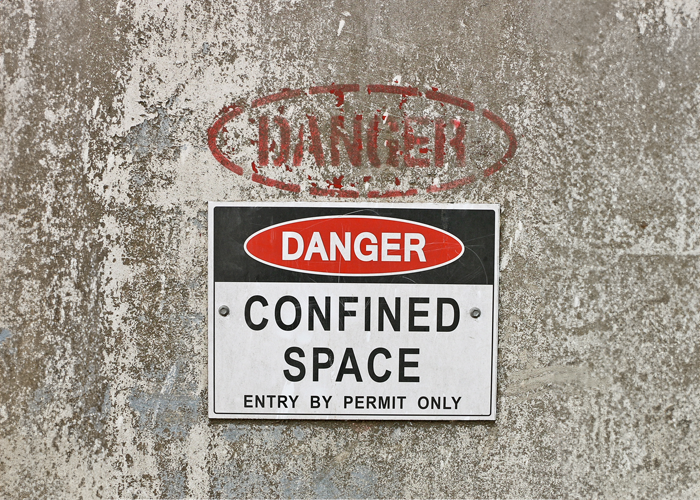
In the realm of workplace safety, confined spaces present unique challenges that demand an unwavering commitment to protection. At FrenchCreek Fall Safety, we understand the critical importance of creating a secure working environment, especially within permit-required confined spaces (PRCS). In this comprehensive guide, we’ll explore the roles of Entrants, Attendants, and Supervisors, shedding light on how our fall protection solutions contribute to a safer confined space work culture.
The Definition Of a Confined Space
OSHA, the Occupational Safety and Health Administration, defines a confined space as a space that meets all three of the following criteria:
- Is Large Enough for an Employee to Enter:
- The space must be large enough and configured in such a way that an employee can bodily enter and perform assigned work.
- Has Limited or Restricted Means for Entry or Exit:
- The space is not designed for continuous human occupancy and has limited or restricted means for entry or exit. This can include factors such as narrow openings, challenging entry/exit points, or the presence of obstacles that could impede a person’s ability to exit quickly.
- Is Not Designed for Continuous Occupancy:
- The space is not meant for continuous human occupancy. It may have atmospheric conditions that could be dangerous or contain materials that could engulf, entrap, or otherwise pose a hazard to employees.
It’s important to note that if a space meets all three of these criteria, it is considered a confined space under OSHA regulations.
Permit-Required Confined Spaces (PRCS)

Additionally, if the confined space has certain hazardous conditions, it may be classified as a “permit-required confined space,” (PRCS) which has additional safety requirements and procedures that must be followed. These confined spaces pose significant risks to workers due to their design, configuration, or contents. Unlike a general confined space, a permit-required confined space requires employers to implement additional safety measures and obtain a permit before allowing employees to enter.
The key characteristics of a permit-required confined space are:
Hazardous Conditions
- A permit-required confined space typically contains one or more of the following hazardous conditions:
- The potential for a hazardous atmosphere (e.g., the presence of toxic gases, flammable vapors, or insufficient oxygen).
- The presence of materials that could engulf or suffocate a person.
- Configuration factors that may cause entrapment or engulfment, such as inwardly converging walls or a sloped floor.
- Other serious safety or health hazards, such as exposed live wires or unguarded machinery.
Requires A Permit
- Before any entry into a permit-required confined space, employers must obtain a permit outlining the specific precautions and safety measures necessary for safe entry. The permit details the steps to control or eliminate the identified hazards and ensures that proper safety protocols are followed.
Specialized Training
- Workers entering permit-required confined spaces must receive specialized training to recognize the hazards associated with these spaces and understand the procedures outlined in the entry permit. This training includes rescue procedures, the proper use of personal protective equipment (PPE), and awareness of emergency response protocols.
Continuous Monitoring:
- Continuous monitoring of the confined space is often required to ensure that atmospheric conditions remain safe throughout the entry.
The permit-required confined space designation is aimed at minimizing the risks associated with entering and working in spaces that pose specific dangers. Employers are obligated to strictly adhere to the safety measures outlined in the permit to safeguard the well-being of their employees.
Confined Space Roles and Responsibilities
Now that we’ve understood the definitions of a permit-required confined space, let’s examine the roles and responsibilities of workers who regularly operate within these conditions. These roles include the entrant, the attendant, the supervisor, and emergency rescue personnel. Let’s specifically explore these roles to gain a deeper understanding of their respective responsibilities.
The Entrant’s Risk and Responsibilities:
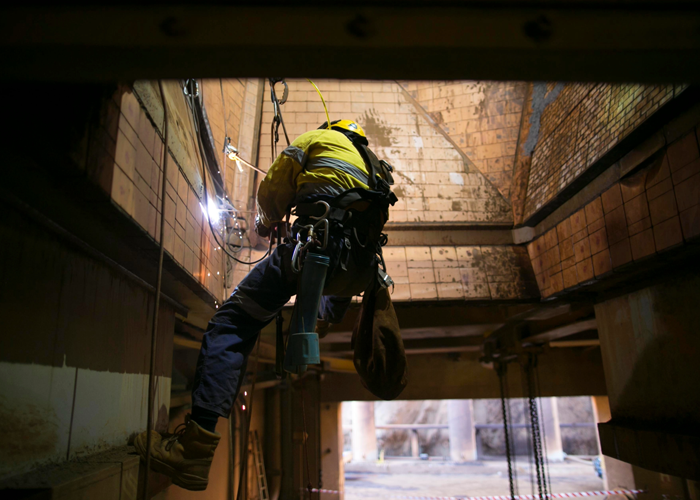
An authorized entrant is an employee who has been granted permission by their employer to enter a confined space. Authorized entrants are required to possess a thorough understanding of the following:
- Potential hazards within the confined space during work activities.
- Proper usage of all equipment, tools, and devices, including air monitoring equipment and breathing apparatus.
- Effective communication methods with the attendant stationed outside of the confined space.
- Procedures for both exit and rescue in case of unforeseen hazards.
In the event of an evacuation order issued by the attendant or entry supervisor, any authorized entrant must promptly exit the confined space. Moreover, every authorized entrant has the authority to cease work and request evacuation if they identify an unsafe condition. This emphasizes the crucial role of authorized entrants in maintaining a safe working environment within confined spaces.
Attendant: The Watchful Guardian:
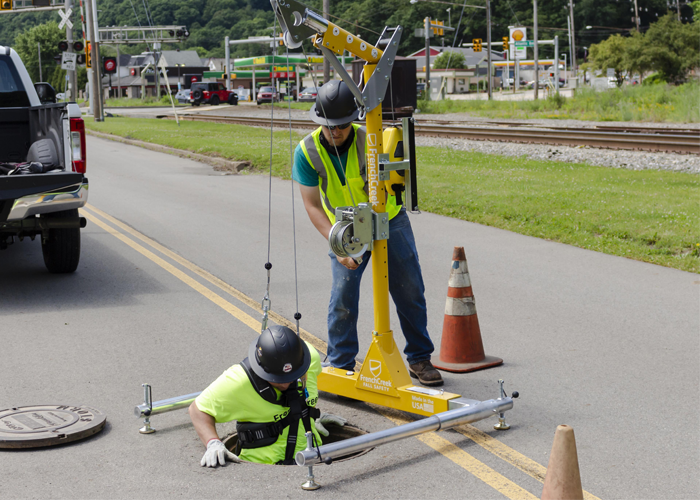
The second role within the confined space team is filled by the attendant, and each Permit-Required Confined Space team must have at least one attendant. The attendant carries a significant level of responsibility within the confined space team, holding the highest number of duties mandated by OSHA. These responsibilities include:
- Understanding the hazards: The attendant often utilizes air monitoring equipment to closely monitor atmospheric conditions within the confined space, promptly communicating any observed changes.
- Recognizing the behavioral effects of the hazards.
- Identifying authorized entrants.
- Remaining outside the confined space until relieved.
- Maintaining communication with entrants throughout the work period.
- Monitoring and evacuating entrants if necessary.
- Summoning rescue services if required.
- Warning unauthorized persons to stay away.
Contrary to the misconception that the attendant’s sole responsibility is to stand outside the entry space and assist the entrant in case of trouble, the listed duties highlight the proactive role that the attendant is required to play in ensuring a safe confined space environment.
Supervisor: The Entry Gatekeeper:
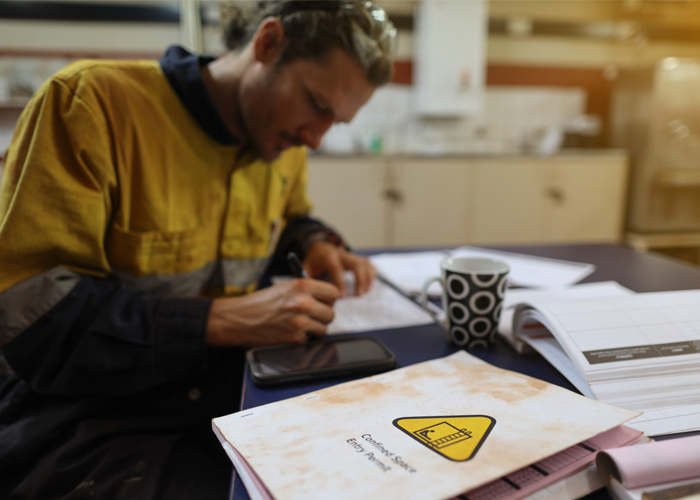
The third component within a permit-required confined space team is the entry supervisor. Typically, this role is shouldered by the employer or a direct representative of the employer. This individual should be equipped with proper training, ready to step into the shoes of an entrant or attendant if the situation demands. The entry supervisor bears the responsibility of assessing the presence of acceptable entry conditions, granting authorization for entry, overseeing entry operations, concluding the entry, and annulling the entry permit. As per the stipulations of OSHA regulations, the entry supervisor must:
- Demonstrate a thorough grasp of the associated hazards.
- Validate the presence of secure entry conditions.
- Carry out the conclusion of entry and permit cancellation.
- Verify the accessibility and efficacy of rescue services.
- Remove any unauthorized individuals from the entry zone.
- Guarantee the continuous maintenance of acceptable entry conditions.
Emergency Rescue Personnel: A Rapid Response:
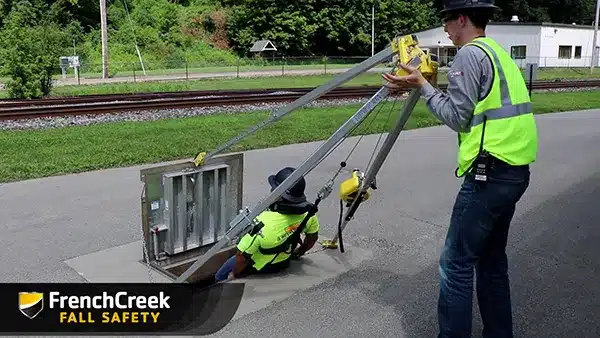
FrenchCreek Fall Safety strongly encourages companies with employees working in permit-required confined spaces (PRCS) to prioritize the establishment of a proficient rescue team or emergency service. It is vital that this rescue team not only comprehends the specific dangers associated with PRCS but also possesses the capability to swiftly reach and aid trapped workers. Employers tasked with hiring individuals for PRCS work should diligently verify that the rescue service is equipped with the necessary personal protective and rescue gear, including respirators, and that its members are highly skilled in utilizing this equipment.
All rescuers are urged to undergo comprehensive first aid and CPR training, with a particular emphasis on at least one team member obtaining certification in both. Furthermore, regular participation in practice rescue exercises is essential for rescuers to enhance their preparedness.
At FrenchCreek Fall Safety, we emphasize that ensuring the safety of workers in permit-required confined spaces is a collective effort, and each participant should fully grasp their role. While entrants bear the primary risk and need to understand proper behavior within the space, attendants play a crucial role in vigilant observation from outside. Concurrently, entry supervisors must diligently verify the space’s safety before granting entry. Training is a foundational element for each role to ensure the effective execution of their responsibilities. Prioritizing safety measures not only safeguards workers but also contributes to a culture of security and responsibility within the workplace.
Selecting The Right Equipment For The Job

There are typically three essential pieces of safety equipment crucial for ensuring safe entry into a confined space. First, a ventilation or blower system serves a dual purpose by supplying fresh breathing air into the confined space, fostering healthier conditions, and enhancing productivity. Simultaneously, it aids in eliminating hazardous atmospheric conditions, such as gases like hydrogen sulfide or carbon monoxide.
The second vital item is a confined space gas monitor, employed to assess atmospheric conditions both before and during entry. This monitor checks for oxygen levels, explosive gases, and the presence of common confined space hazards like hydrogen sulfide or carbon monoxide.
Lastly, a raising or lowering system with an emergency rescue winch is essential, providing fall protection during entry and the capability to rescue individuals from the confined space. FrenchCreek takes pride in manufacturing confined space tripod and davit systems to meet these needs. By adhering to proper confined space roles and utilizing the correct equipment, confined space entries can be transformed from hazardous to manageable work environments.